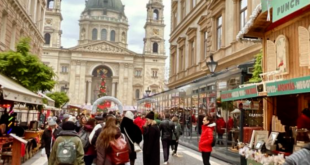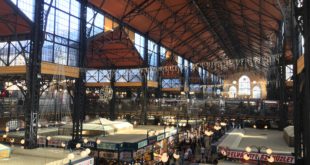It is easy to carry, not so expensive to buy, and makes a good Christmas gift if you are visiting one of the Market Halls in Budapest in winter time. You can also try them before just buying them to make sure that you really love what you give as a Christmas gift from Hungary.

Szaloncukor is made of fondant, then covered by a thin chocolate layer (or not, but most of them are), and then wrapped into a nice, Christmassy paper or wrapping sheet with a special shape. The oval shaped fondant candy keeps its ovalness, and the szaloncukor as a whole has a bow tie shape with two frilly ends.
More traditional szaloncukor candies were wrapped in real paper and the frills were made of a very fine flimsy paper of distinctive colour. These days, the Christmas candy comes in shiny wraps. Try the best Hungarian meals and sweets at one of the Tasting Tours.
Nobody knows for sure how the special Christmas candy tradition started in Hungary, but one thing is sure, it wasn’t until the late 19th century that it started to be part of the Christmas celebrations. Hungary was part of the Austria Hungary dual monarchy, when the richer Hungarian noble families had nice parlors (or salons) to erect a Christmas tree (often for each child) and put up Christmas decor on the trees. Amongst them Salon sugar (szaloncukor), which were handcrafted from soft fondant with added flavours. The candy most probably came to Hungary via German sweets traders and makers (fondant was originally made in medieval France). One of the most popular Hungarian novelists, Mor Jokai called them Szalon czukkedli, which also shows that the name of the candy started off as a borrowed word from German.
It was only years later that the top Hungarian sweets manufacturers of the 19th century started to make the szaloncukor candies by the kilos. The easy production and delicious flavors made it and instant success, so many Hungarian families started to buy them from Cafe Gerbeaud and from Stühmer (both still in production). Budapest led the fashion, but the tradition of szaloncukor fondants were quickly picked up by families living outside Budapest. These days it is very widespread, from small villages to the Hungarian capital.
While fondant was typical during the Socialist era, after that, since 1989 the fillings have been made from all sorts of exquisite chocolate bonbon fillings. So we may as well call them Hungarian Christmas truffles, festive bonbons, silky smooth winter sweets.
If you are visiting Budapest in December, check out some great tips for things to do in Budapest at Christmas.


